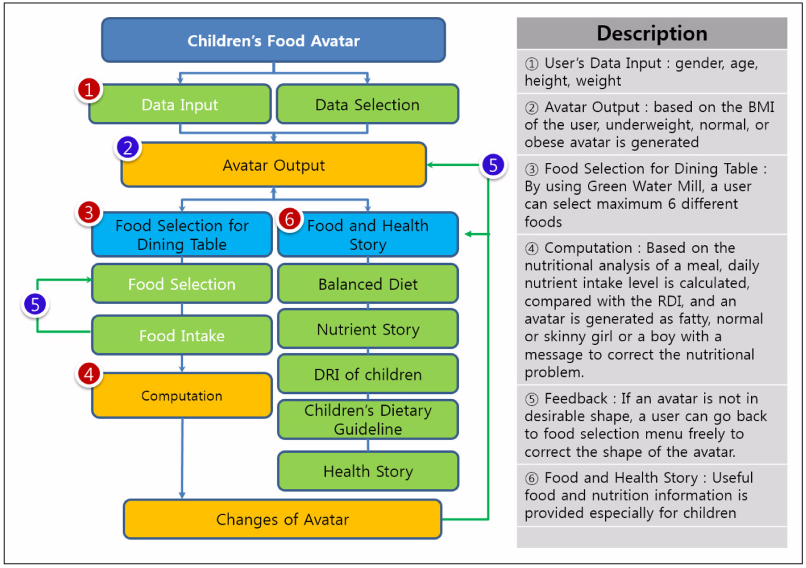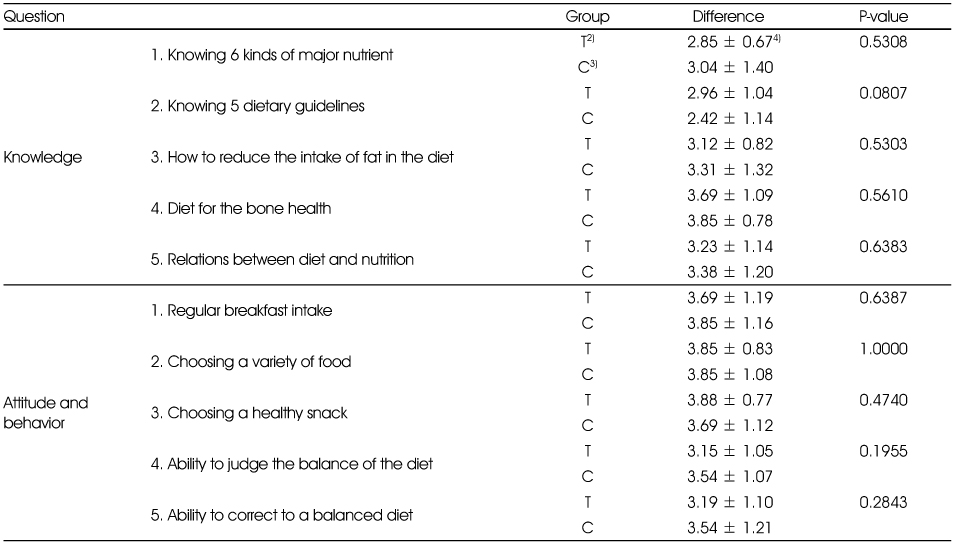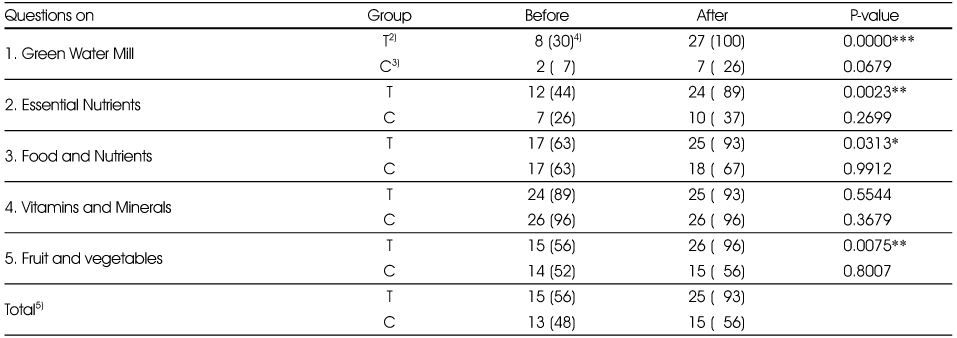References
1. Choi MK, Lee HS, Kim SB, Kim SN, Kim SY. Establishment of one portion size of foods frequently consumed by Korean children aged 6-11 using 2005 Korea national health and nutrition examination survey and its comparison with adults. Korean J Community Nutr 2010;15(5):625–635.
2. Choi SY. The difference in eating habits and food preference of elemantary school students residing in two different areas and the need of nutrition education Nutrition Education Major Dept. of Nutrition Education Graduate School of Education Sungshin Women's University; 2011. p. 24.
6. Food Scanner. Calorie counter, BMI-calculator 2012. cited 2012 Fabruary 14.
8. Kim AY. A study on the dietary pattern of upper grades of elementary school children to develop a food & nutrition education program based on practical arts subject Daejon, Korea: Department of Nutrition Education, Graduate School of Education, Paichai University; 2012. p. 1–2.
9. Kim BK, Park HR, Kim JW. Development of comic books and an animation as dietary education materials for children. Korean J Community Nutr 2008;13(5):630–639.
10. Kim HS. The relation between avatar playing and appearance management behavior of the elementary school students Gyeongin National University of Education; 2011. 5–6.
MS thesis.
11. Kim HY, Kim JW. Development and application of food safety education textbook on agri-food for creative activities of 2009 revised curriculum. J Korean Pract Arts Educ 2011;24(3):255–279.
12. Kim JW. Analysis of food and dietary education in the 7th primary school curriculum as a science & technology for life. J Korean Pract Arts Educ 2005;18(1):129–144.
13. Kim JW, Hyon SM. Improvement of dietary attitudes of elementary students by nutrition labeling education. Korean J Community Nutr 2007;12(2):168–177.
14. Kim , MJ , Kim KW, Seo JS, Lee YM, Oh YJ, Ahn HS, Kim JH, Kim JW, Park HR, Kim SH, Park HK. Development of a webbased food selection program for children's nutrition education Comp Rev Korean Soc Food Sci Nutr; 2008. p. 2–13.
15. Kim SB. Development of new functional agricultural food and value-added technology National Academy of Agricultural Science; 2011. p. 4–6.
16. Korea Center for Disease Control. Korea standard growth chart of children and adolescent Seoul: Ministry of Health & Welfare; 2007.
17. Korea Communications Commission. Statistics of wire and wireless users in Korea 2012. cited 2012 August 10. Available from
http://www.kcc.go.kr.
18. Korean Nutrition Society. Dietary reference intakes for Koreans, first revision Seoul: Korean Nutrition Society; 2010.
19. Lee HJ. Smart phone based Chinese education Application project and production experiment Ewha Womans University; 2011. 9–10.
MS thesis.
20. Lee YM, Shim JE, Yoon JH. Change of children's meal structure in terms of temporal and spatial dimensions: analysis of the data from the Korea national health and nutrition examination surveys of 1998 and 2009. Korean J Community Nutr 2012;17(1):109–118.
21. Lim JH, Lee HJ, Kim JW. Development of children's obesity prevention program by using 'Health Diary'. J Korean Pract Arts Educ 2009;15(4):281–300.
22. Ministry of Health & Welfare. Health diary 2012. cited 2012 February 14. Available from
http://diary.hp.go.kr.
23. MOHW. KCDC. Korea National Health and Nutrition Examination Survey (KNHANES IV-3). Korea health statistics 2009 2011.
24. Rothwell WJ, Cookson PS. Beyond instruction : comprehensive program planning for business and education San Francisco, Calif: Jossey-Bass Publishers; 1997.
25. Rural Development Administration. Nutrition guide for my children Paju: Kyomunsa; 2010.











